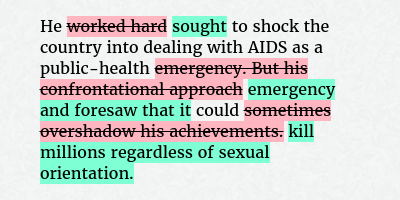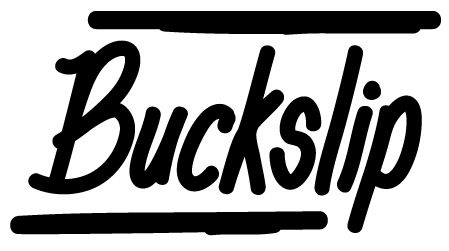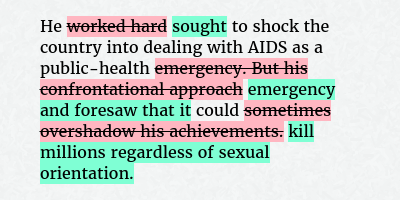The Thing
A few weeks back, when Larry Kramer died, I found myself watching this two minute extract from How to Survive a Plague on an endless loop for days. It’s a conference room, somewhere in the early 90s. For the first 40 seconds, Kramer sits silent, increasingly agitated, as those around him bicker from various places deep in the weeds of their own takes on the AIDS pandemic. Their individual grievances aren’t nothing, sure. But nobody’s talking about the thing itself. And then he simply unloads, over the top of the din:
Plague! We're in the middle of a fucking plague, and you behave like this?
The room shuts up. And so he keeps going. It’s like a cleansing force that washes over everyone in the room. Plague, he repeats, and repeats, and repeats, numbing every little instinct in anybody watching other than the rage. You can’t hear that roar and be unchanged. It’s the existential nature of the fight that he drags right back to the surface in each of them. How could you be thinking about anything else when people are dying, when so many lives are at stake?
Sure, with Kramer, this was partly performative, as this sweet remembrance of his friendship with Dr Anthony Fauci makes clear, but what he knew was that when the fight is life and death, asking politely for moderate change gets you nowhere. Even if it leaves the institutions of the status quo entirely uncertain how to make sense of you, or what you did, as this little track changes on the Times obit from the marvellous @nyt_diff bot makes all too clear:

At around the same time, the whole thing with Christian Cooper and the Central Park dog lady was blowing up. Given the very avian nature of the hopeful metaphors I was playing with in the last Buckslip, I’d turned to thinking about J. Drew Lanham’s unforgettable “Birding While Black” from a few years back. And how it situated the sort of quiet contemplative space promised by birding — which I’d been celebrating in that email — as just as marked by white privilege and racism as anything else. And then in Vanity Fair, two days after the murder of George Floyd in Minneapolis, two days after Christian Cooper in the park went viral, but written before both, inspired more by the murder of Ahmaud Arbery in February, Lanham delivered “Nine New Revelations for the Black American Bird-Watcher”:
Revelation #6: Why do people cry and set music to far-away murmurations; the swirling, whirling, wheeling aerial ballets of flocking birds—but then hate the very same birds up close? Asking for the same European starlings from #4 and lots of befuddled blackbirds.
The world since the end of May has escalated to another level of ferocity, of urgency, of ugliness, and of possibility (unless the world in fact ends next week). There’s not only one plague to scream about (there was never only one), but the fight against another, longer, more profound one — systemic racism in America and around the world, and the murderous and violent institutions that perpetuate it — has taken the tannoy. The pandemic has not gone away, but out of necessity, the fight for that better future world we want to live in has moved out into the streets. There was no Larry Kramer in this case — it was the video of a man’s murder, his calling for his dead mother as he knew he was going to die, that snapped the world’s attention in place. That made Black America stand up, and in turn the world. This, what we’ve been doing, what we’ve been either living with or actively or passively enabling, cannot go on. We’re in the middle of a fucking plague, and society cannot behave like this.
Between when you’ve last heard from us and now, concepts like “Defund the Police” have gone from abstract fringe idea to tangible policy. A rocket launched into space. Police in America and elsewhere unleashed unforgivable violence on peaceful protestors that we all couldn’t stop watching on looping video. There’s an autonomous zone in Seattle now. There was a whole thing with the op-ed desk at the Times, and open calls for fascist intervention from elected political leaders. Every corporation under the sun had to say something that should be obvious, but still needs to be stated directly — that Black Lives Matter — which is something we’ve probably never said directly in this email because it seemed, I dunno, self evident to our complacent, progressive, self-defined-as-allies white selves? There’s such privilege in thinking you don’t need to say it.
Since then, amongst the reading lists, the calls to “do the work”, the back-and-forth over the meaning of black squares, about silence as complicity but speaking as taking up space, the global conversation has changed. When protest works, it really works. Things seem again at risk of splintering into a thousand tiny micro-debates about subclauses (statues as disingenuous history lessons, the value of a shop window, and so forth), but the moment itself, and the fury swirling within it, is holding, strengthening, becoming something unstoppable.
Do the reading lists do anything? Not really, says Lauren Michele Jackson, but the reading always needs to be done:
Calls to read more and to read this strike me as particularly funny, or at least comic, in the middle of pandemic when everyone admits that even our customarily wan attention spaces have been decimated. There are snappier places to glean the long-story-short of America, like podcasts, if it took someone this long to care. As a friend pointed out on Twitter, George Zimmerman was acquitted seven years ago. Donald Trump was elected four years ago. Black History Month happens every year. Cops kill all the time. The books are there, they’ve always been there, yet the lists keep coming, bathing us in the pleasure of a recommendation. But that’s the thing about the reading. It has to be done.
One conversation we’ve been having a lot these last few weeks is this: when the pandemic has shown much of what controls our lives to be not immutable, but simply a construct like any other, we turn towards imagining more just future worlds. But who gets to do the imagining? Who gets to define what better looks like? This tweet by Devon Powers jumped out at us, as did the concepts she explores in further depth in this Medium essay. We were motivated to reach out to her, and we’re going to have a conversation between her and Chris in the next Buckslip, which we promise won’t take a month.
This week’s #GeorgeFloydProtests have revealed many things, but one of them is that a future that does not reckon with its past is not a future. The past shapes and envelops us, in our bodies, buildings and institutions. You can’t push past it or say it doesn’t matter.
— Devon Powers (@devjpow) June 5, 2020
Something stuck with me also in this Tania Adam essay on the pandemic making its way to Africa, which explores the thoughts of Achille Mbembe, and how the character of Okonkwo reacted to the arrival of the colonizer in Chinua Achebe’s Things Fall Apart:
Mbembe asks how to create community at a time of such calamity, when we’re not even able to bid farewell to those who pass away. I’m bold enough to seek dialogue with him, and to venture that perhaps only specific communities can be created: a community of survival and solace, but especially for political strengthening and accountability.
Okonkwo, the Igbo warrior from the village of Umuofia, had to re-imagine his world, and he did it on his own terms, unsuccessfully, because Okonkwo was only interested in preserving his power above all else, while his world fell apart. Today we’ll have to re-imagine the world from the bottom up, reinvent the collective and, most importantly, take on the tools that will make it all possible.
That’s the work that’s happening in the streets right now, and as difficult as it is to wade through the noise of it, it’s the same work that’s happening in our shared docs and in our Twitter streams. It’s hard work. All of it. It’s not comfortable. I don’t know how best we can use this little Buckslip platform to help, but I do ask all of you to let us know, if you have any ideas, or people or initiatives we can lend it to.
Oh, and keep donating to those bail funds, yeah?
– Patrick
Things
A gloriously scathing academic critique of the “Earth is healing, we are the virus” outlook on COVID from a couple of Cambridge geographers. It’s too easy and dangerous, they argue, to presume that nature will simply just fix our mistakes:
When we talk about nature healing or resurging, what is it we really mean? A story of return – but to what? Restoration unavoidably requires particular reference to ecologies of the past. Yet, the abilities of particular ecologies to persist is a political and ethical matter, dependent on the ways we identify, respond to, and cultivate specific ecological milieus.
Meanwhile, a plastic rain’s gonna fall. In fact it already is.
Oh, look! A humpback whale has swum all the way up the St. Lawrence River, delighting the citizens of Montreal!
In the sprawling essay “History Will Judge the Complicit”, Anne Applebaum is clearly writing for a very specific audience of influential members of the Republican party she knows will be reading it (at least one of whom seemed motivated to speak out against the president in the days following its publication). Some of them, she calls out by name. But even if you’re not a fascism-enabling senator (a very small percentage of our readership, we believe), this is a compelling history of 20th-century complicity at the scale of both the human and the systemic, as she works towards the core of the question: what turns some people into collaborators, while others, when the moment presents itself, find inner strength and speak out? For anybody in doubt, she states it directly:
The point is not to compare Trump to Hitler or Stalin; the point is to compare the experiences of high-ranking members of the American Republican Party, especially those who work most closely with the White House, to the experiences of Frenchmen in 1940, or of East Germans in 1945, or of Czesław Miłosz in 1947. These are experiences of people who are forced to accept an alien ideology or a set of values that are in sharp conflict with their own.
I imagine the history books will talk about ‘worldwide protests’ and thats a whole lot of it but if you leave out ‘some kids in Minneapolis burned down a police precinct and a lot of powerful ppl went ‘hmm was not aware they could do that,’ you’ve missed the story.
— kang👎 (@jaycaspiankang) June 8, 2020
In an excellent piece of slow reporting in the Times, Jack Nicas follows 17 people — the owner and (former) staff of an Oakland bar, from the bartender to the cleaner — over twelve weeks of lockdown. There’s so much going on in this piece, mostly due to the simple fact that everybody’s individual struggle through these last few months has been complex and tough and has involved interacting with far too many broken systems to count, all of them not set up for chaos.
You know what’s proven itself a pretty amazing tool for organization and radicalization not just in these past few weeks, but these past few years? We hate to say it, and we hate to use the damn thing when there are so many more elegant options, but honestly it’s true: Google Docs is the best and most effective tool of the collaborative internet, “the social media of the resistance”, as Tanya Basu puts it in MIT Tech Review. In its infinite pool of thrown-together, evolving collations, reading lists, lists of bail funds, or spreadsheets of terrible men in earlier times, it’s almost as though it’s stepped into the role of the collaborative, editable internet that Tim Berners-Lee first imagined. It’s not objectively a good piece of software, but it works, right?
Meanwhile, over in the Wikipedia corner of the utopian ideal of the collaborative internet, George Floyd’s murder is provoking some pretty big questions about the value of a “neutral point of view”, as Stephen Harrison explores for Slate.
The British East India Company ☕️ is taking the time ☺️ to reflect and grow 🌱 we know we have lots to learn 🤓 📖 but we hear 👂 you. We see 👀 you.
— Lexit Ed Miliband (@GAYLEXITNOW) June 8, 2020
❤️ You are valid! ❤️
You’ve probably already seen clips from Killer Mike’s moving speech post-George Floyd (full version here), in which he implores protestors to direct their anger and energy in more positive directions: “It is your duty not to burn your own house down for anger with the enemy,” he says. “It is your duty to fortify your own house so that you may be a house of refuge in times of organisation.” At the same time, Mike, whose father was an Atlanta police officer, gives as succinct explanation as there is on the psychology behind wanting to smash things up. In an interview to promote the howl of rage that is the latest (and talk about timely) release from Run the Jewels, he tells The Guardian, “It feels like nobody gives a shit when you’re black. That’s why you burn down your own community, not because you want to burn down your own community, but because you feel like nobody gives a shit.”
We’re loving this series on “Pandemic Objects” from the folks at the Victoria & Albert Museum, a project cataloging and reflecting on the way an array of everyday objects have assumed new meanings and uses during the coronavirus outbreak.
“Toilet paper becomes a symbol of public panic, a forehead thermometer a tool for social control, convention centres become hospitals, while parks become contested public commodities. By compiling these objects and reflecting on their changing purpose and meaning, this space aims to paint a unique picture of the pandemic and the pivotal role objects play within it.”
While we were as geekily curious about the SpaceX Crew Dragon expedition as the next space nerd, with the launch coming just days after the murder of George Floyd it was unavoidable that “Whitey on the Moon” should seem the most appropriate soundtrack (I can't pay no doctor bill, but Whitey's on the moon / Ten years from now I'll be payin' still, while Whitey's on the moon). Also: why did the spacesuits need to be so… boxy, uninspired, and plain ugly? Apparently this opinion puts us in the minority, with some approvingly likening the suits to a “Tuxedo for the Starship Enterprise”, and speculating whether their design might revive the fortunes of wearable tech. Because comic book/superhero culture sometimes seems like the only culture we have anymore, Musk & Co. predictably tasked Jose Fernandez, a respected costume designer for Marvel flicks, with creating the prototype for these next-generation space suits — with Musk himself, it appears, lurking over the designer’s shoulder. What, Rei Kawakubo or Ric Owens weren’t available?
On top of it, Elon Musk’s hype-fulled, corporate-libertarian vision for space travel and colonization is some bullshit we’ll never buy into. Fortunately Buckslip friend Chris Michael was on hand at The Guardian with this awesome look back at the 1960s craze for oceanic exploration, along with more contemporary visions of aquatic living. Chris ends his report with this poignant reminder from legendary marine explorer and biologist Sylvia Earle:
“[Ocean exploration] has taught us that life exists everywhere, even in the greatest depths; that most of life is in the oceans; and that oceans govern climate. Perhaps because we’re so terrestrially biased, air-breathing creatures that we are, it has taken us until now to realise that everything we care about is anchored in the ocean.
“It’s the ocean that drives planetary systems – and we have done more harm to our life-support system in the last 50 years than we have in all previous human history,” she says. “If we fail the ocean, nothing else matters.”
Montreal humpback update: “Wayward humpback whale, beloved to Montrealers, found dead floating down St. Lawrence”.
Sigh. Maybe it’s best we return to the space-theme for a moment more. The thing is, we’d like to have nice things to say about the new Steve Carrell-led Netflix series, but all we could come up with (aside from the presence of Fred Willard, RIP!) is “US Military Could Lose Space Force Trademark to Netflix Series”.
When we say abolish the police we aren't talking subtraction. Yes remove a system that doesn't work, but and create a new framework that doesn't rely on the immediate and constant threat of death. It's about addition. It's about reimagining.
— Nana Kwame (@NK_Adjei) June 1, 2020
From the department of omens we could do without, it looks like the sun may be entering into another of its more actively volatile cycles, emitting powerful solar flares and storms that have the potential to wreak havoc on satellite systems and energy grids resulting in blackouts. (“The Sun Has Been Hibernating for Years. It Might Be Waking Up”) In 2012 the earth was just barely outside the firing line of one particularly extreme solar storm; had it hit, NASA scientists say, it would have caused “widespread power blackouts, disabling everything that plugs into a wall socket.”
With that in mind, here is where we share the latest findings in Mayan archeology — the discovery of the largest and oldest-known ceremonial structure built by the ancient civilization, in southern Mexico, dating to 3,000 years old. Making 2020 feel all the more like the new 2012 of Mayan end-of-days prophecy. So much so that the conspiracy theory now circulating the Twitterverse has it that we’ve been reading the Mayan calendar all wrong. Next week it all ends! Aren’t you a little bit relieved?
Exactly one year ago today, we were hungover from celebrating our hometown Toronto Raptors’ winning the NBA championship over the Golden State Warriors. Those truly were the happiest of days (even if we had to give a full-day presentation the next morning), the city erupting in civic expressions of joy not seen in our lifetimes. Going into those playoffs, no one had given Toronto much chance to win it all. But as the team’s run went deeper and deeper, enabled by the unlikeliest and now most famous of buzzer-beaters, and a collection of personalities you could only adore, it all had the makings-of-destiny feel to it. So pardon us for the rest of this Sunday while we dive into this excellent behind-the-scenes, 37-minute-read on that improbable NBA title, re-watch key quarters, enjoy memes of a very drunk Marc Gasol at the victory parade, and think back to the carefree joy of a never-ending stream of high fives with strangers on the street.





